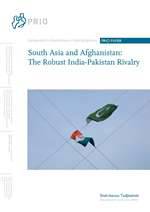Is Afghanistan a playground for the India-Pakistan conflict? Or, are the countries in South Asia – Pakistan in particular – the recipients of unrest that spills over from Afghanistan? Alternatively, is the larger neighbourhood, South Asia and Afghanistan included, simply a victim of rivalry between global powers? Views on the relationship between Afghanistan and its neigh-bouring countries vary widely. The different views have fundamental consequences for how one understands the conflict, and for what policies one finds constructive. Cognizant of the roles of actors in Central Asia and the Persian Gulf region, and excluding neither the importance of Afghan domestic factors nor global forces, this paper emphasizes the way that the India-Pakistan conflict – the overwhelming security issue in the South Asian region – informs the two countries’ engagement in Afghanistan.
With the announcement of the beginning of the gradual US troops withdrawal from July 2011 and plans to hand over security responsibility to Afghan forces in 2014, attention has moved to the role of neighbouring countries in filling in the expected political vacuum. The question is whether neighbouring states would revert to behaviour witnessed in the aftermath of the Soviet withdrawal in 1989, where their influence on different warring ethnic groups sowed further discord for national unity and contributed to the civil war of 1992-1996, or, whether they will be able to exert positive influences over the surviving Afghan state and contribute to regional stability.
This PRIO Paper forms part of the project 'Afghanistan in a Neighbourhood Perspective', funded by the Royal Norwegian Ministry of Foreign Affairs. The project has previously published a PRIO paper titled 'Afghanistan in a Neighbourhood Perspective: General Overview and Conceptualisation', and will publish two additional papers on the Persian Gulf and the Central Asian perspective, respectively.








